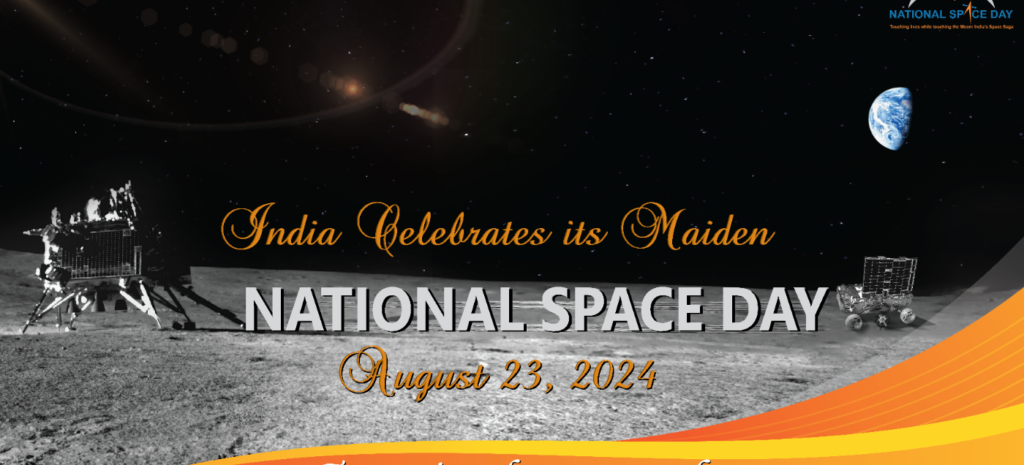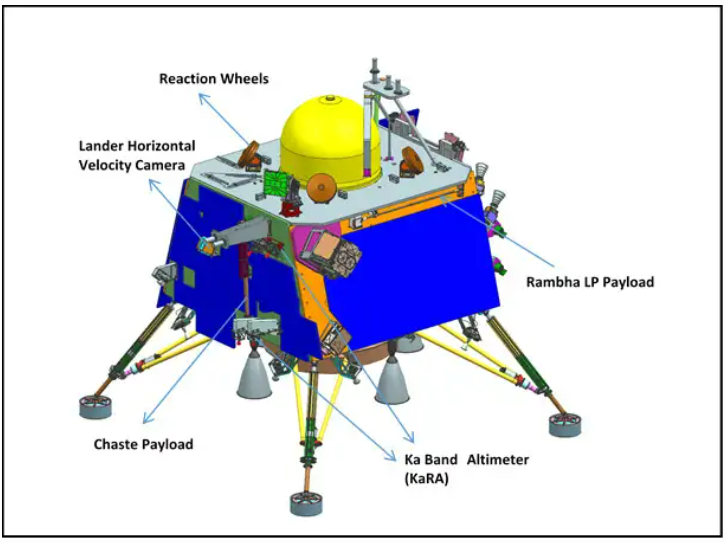Isro national space day, On August 23, 2023, India’s Chandrayaan-3 mission achieved a historic milestone with the safe and soft landing of the Vikram Lander on the Moon’s southern polar region, making India the fourth country to land on the lunar surface.

The successful deployment of the Pragyan Rover and the naming of the landing site as ‘Shiv Shakti’ Point led to August 23 being declared as India’s ” Isro national space day,” which will be celebrated for the first time on August 23, 2024.
Isro national space day: Brief about chandrayaan-3?
The Lander payloads: on Chandrayaan-3 include ChaSTE for measuring thermal conductivity and temperature, ILSA for seismic activity around the landing site, and LP for plasma density variations. It also carries a NASA-provided passive Laser Retroreflector Array for lunar laser ranging.
The Rover payloads: feature APXS and LIBS to analyze the elemental composition near the landing site.
Isro national space day, Chandrayaan-3 consists of an Indigenous Lander module (LM), a Propulsion module (PM), and a Rover to develop and demonstrate new technologies required for Interplanetary missions.
Isro national space day: Why launch Chandrayaan-3?
Chandrayaan-3 was launched from Satish Dhawan Space Centre on 14 July 2023. The spacecraft entered lunar orbit on 5 August and became the first lander to touch down near the lunar south pole.
National Space Day – 2024
— ISRO (@isro) August 22, 2024
One day to go!
Come, let us together celebrate the maiden National Space Day 🇮🇳@DrJitendraSingh #NSpD2024 pic.twitter.com/RAZkvSFSwM
To know about Chandrayaan-3 in-depth ISRO share detailed analysis form of PDF.
The mission objectives of Chandrayaan-3 are:
- To demonstrate a Safe and Soft Landing on the Lunar Surface
- To demonstrate Rover roving on the moon and
- To conduct in-situ scientific experiments.
To achieve the mission objectives, several advanced technologies are present in Lander such as,
- Altimeters: Laser & RF-based Altimeters.
- Velocimeters: Laser Doppler Velocimeter & Lander Horizontal Velocity Camera.
- Inertial Measurement: Laser Gyro-based Inertial referencing and Accelerometer package.
- Propulsion System: 800N Throttleable Liquid Engines, 58N attitude thrusters & Throttleable Engine Control Electronics.
- Navigation, Guidance & Control (NGC): Powered Descent Trajectory design and associate software elements.
- Hazard Detection and Avoidance: Lander Hazard Detection & Avoidance Camera and Processing Algorithm.
- Landing Leg Mechanism.


Several Lander special tests have been planned and carried out successfully to demonstrate the above-mentioned advanced technologies in earth conditions.
- Integrated Cold Test – To demonstrate the Integrated Sensors & Navigation performance test using a helicopter as a test platform.
- Integrated Hot test – To demonstrate a closed-loop performance test with sensors, actuators, and NGC using a Tower crane as a test platform.
- Lander Leg mechanism performance test on a lunar simulant test bed simulating different touch-down conditions.
